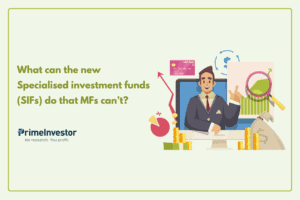HDFC Top 100 was the largest fund in its category for a long time (and is still among the top 5 in its category in AUM). It has shown great mettle in its comeback stories time and again.
Today, for us, it serves a different purpose. HDFC Top 100 is a great candidate for a serious case study on the changing performance of mutual funds in India and what it means to you. A large asset size, that speaks of the amount of participation by retail investors in this fund, a long-enough track record (among the oldest funds) to watch performance over evolving markets and cycles and of course its meteoric rise in the performance chart and the struggles now , makes it an apt case for analysis and understanding.

This article is not a review of HDFC Top 200 (you can use our MF Review Tool for our calls on funds). Rather, it is meant to throw light on the history of this fund and large-cap funds in general, so that it can teach some object lessons for investors on why portfolio maintenance is important.
The meteoric rise
HDFC Top 200, as it was earlier called, was always an aggressive large-cap-plus fund – taking some exposure outside of pure large-caps to generate alpha. Backed by a supremely skilled fund manager, Prashant Jain, the fund has these characteristics:
- A value-conscious approach to investing, exiting where valuation became uncomfortable
- Not compromising on valuations and often staying underweight on sectors such as FMCG or IT when they commanded premium valuations.
- Not wanting to take momentum picks or sectors that are new to the listed space or those that ask for valuations not backed by quality balance sheets or growth potential. Staying away from IT in the run-up to Y2K, or realty and infrastructure in the run-up to the 2008 fall are examples.
- High-conviction bets and sticking to its guns even in the face of underperformance
- Straying away from index stock and sector weights to seek alpha
The above worked in the fund’s favour for a long period of time. And the alpha was not a meagre 1-2 percentage points that you see in funds these days. As this simple calendar year returns graph will show you, the bellwether index was no match for active funds and HDFC Top 200 was among those that breezed past their benchmarks effortlessly.
The fund had its rainy days. It could not keep pace with its peers when the infrastructure, real estate boom was at its peak as the fund stayed away from this space. But the strategy paid off as 2008 saw it falling less than index and peers, less hurt by avoiding risky bets that others had taken.
But again, its favourite cyclical bets failed to pay off in 2015 but 2016 saw them delivering. In other words, its calls – both cautious ones and aggressive ones, worked with a lag. And that is not totally unexpected in a value-conscious fund.
This grand show has kept HDFC Top 100’s since inception record intact. That means if you were one of the early investors in this fund, you will have found little reason to complain and more importantly, unlikely to have been conscious of the fund’s underperformance in recent years.
But even as the fund bounced back every time, the stock market field had changed for good by 2010. And by 2012, while the fund was still among the top contenders, the margin of outperformance was dwindling. By 2015, when the markets started re-adjusting to newer ways of delivering, HDFC Top 100, along with many large-cap funds, started losing its dominance.
The struggle and reasons
When a fund has high conviction bets on which it goes overweight and the same does not deliver, the pain can linger for long. And when the fundamentals of the market changes, it compounds the problem. Result – the gap between the fund and the benchmark widened, making it a lot more difficult to catch up. The data below gives the outperformance (or underperformance) of the fund over its current benchmark – the Nifty 100 TRI on a rolling 3-year return basis.
This rolling 10-year chart below will give you a better indication of how its glorious past could hold the fund for a good while, but not long enough as it slipped into underperformance even over 10-year periods. Since November 2019, the fund has steadily lagged the index on a rolling 10-year return.
At present, the fund lags the category in terms of not just consistency, but also fares poorly on standard deviation, downside capture, and also alpha compared with more stable peers that came into the scene in the past decade or decade and half. Of course, in this exercise, we weigh active large-cap funds along with index funds to see how they fare. This comparison has become necessary as largecap as a category has been faring poorly and the minimum expected of an active fund would be to beat the index.
Structural changes in market returns
HDFC Top 100 is not alone in its underperformance of benchmark in recent years. The following events that took place changed the large-cap investing landscape.
- The flight to quality that took place post 2010 could never really be meaningfully reversed as Corporate India witnessed many key events – from demonetization, change in banking regulations and real estate regulations besides inertia for any kind of capex build up. This led to polarized valuations in the market. Funds that rode high valuations without fear were rewarded while those that did not believe in paying for such premium lost out.
- The rally phase for cyclicals have increasingly become shorter. Rallies in banks and PSUs or in auto and capital goods are unable to sustain in the absence of meaningful expansion in key sectors in the economy. Funds like HDFC Top 100, that take bets based on mispriced valuations and hope for a turnaround were not rewarded for their patience.
- The above two resulted in a market chasing very few stocks such that market-cap based index investing was the only way to ensure you stayed with the market returns.
- Active funds that took concentrated weights in the top index stocks were the ones that outperformed. While HDFC Top 100 was known to take concentrated bets, early on, it was outdone by peers like Axis Bluechip. The later currently has a 64% weight to its top 10 stocks as opposed to 53% by HDFC Top 100.
- Money pouring into passive investing, through various channels, including pension money, also provided impetus to index stocks and the index themselves.
Changes in industry
If the above is a gist of the structural shift in the markets and corporate fundamentals, the MF industry, too, saw some shifts.
- Regulatory shift that required funds to compare their performance with the total returns index (returns of index including dividends reinvested) meant that funds were suddenly staring at underperformance. The already slim margin of outperformance slipped to negative grounds when the TRI became the mainstay index. (separately, remember, even in the early years of outperformance, the NAV return never considered the entry load that you paid upfront until 2009).
- The onset of direct plans from 2013 not only meant that the industry had to become cost conscious but also had to contend with low-cost index products. A decade ago, the number of index funds were a handful. Now the number competes with large-cap funds. With a thin outperformance or significant underperformance of index, large-cap funds were unable to compete with low-cost passive funds that rode the lopsided market cap wave.
- When SEBI’s new categories came in, they posed 2 challenges to funds: they had to fit themselves into those categories thus giving up their freedom to navigate across market cap. HDFC Top 100 for instance, had become a pure play large cap (renaming itself as HDFC Top 100 from Top 200), thus losing the leeway it earlier had.
Not embracing change
Sometimes not embracing changes can prove to be costly. Apart from the market and industry changes, HDFC Top 100 had its own slips.
At a time when the industry and investors are becoming cost conscious and outperformance margins are thinning, cost is one key lever to improve returns. In this HDFC Top 100 could have done better.
Despite being the fifth largest in the large-cap category now in terms of AUM, it ranks 17 (out of 28 funds) in terms of lowest expense ratio under the direct plan. As of July 31, 2020, the TER of the direct plan of HDFC Top 100 stood at 1.28%. While it has indeed come down over the years, similar peers in terms of AUM have positioned themselves with far lower expense ratio. For example, Mirae Asset Largecap had an attractive 0.62% under the direct plan while it was 0.43% for Axis Bluechip; the latter having a marginally lower AUM than HDFC Top 100.
The other strategy-level call is a limitation in not calling off a bet that didn’t work and moving to where markets went. When the structural changes in markets bring about permanent change in the fortunes of a portfolio, a re-look may become inevitable.
For example, while banking and finance is a large bet in many a fund’s portfolio, HDFC Top 100 was caught on the wrong foot twice. One, it took bet on PSU banks when the retail banking boom started. This resulted in missing a roaring opportunity for a good part. When this passed, the increased NPA issues with public sector banks posed a greater challenge of not knowing when the clean up would be complete. Similarly, lack of spends and lack of visibility with PSU companies meant that their ‘value’ didn’t turn to growth at all. Funds that simply moved to ‘quality’ paying a premium to avoid this uncertainty, saw themselves doing well.
The above narration is, for a good part, true of many a large-cap fund. We have also written about such shifts in other funds here: https://www.primeinvestor.in/why-were-avoiding-some-of-the-iconic-large-cap-funds/
The lessons for investors
There are many learnings from the robust record of a fund like HDFC Top 100.
- There is no such thing as buy and hold. There is only ‘staying invested in equities’. The product you choose to stay with, will change with times and market conditions.
- Even the best of funds can slip and others will take over. When the underperformance is pronounced, it is better not to be in denial (because the fund has delivered well for you in the past) and instead move on with what suits you in the changed market scenario. If an index fund works better, no reason not to shift.
- When the margin of outperformance thins, cost becomes a key metric to look for. To this extent, one cannot be oblivious to cost across equity categories, although cost does play a lesser role in equity than in debt.
- You can appreciate funds sticking to their conviction but at the same time, not going overboard with allocation to star performers will ensure your portfolio does not suffer if the conviction does not pay off.
- Instead, having a mix of styles will help counter such underperformance in styles and strategies.
When you check our review tool, many of you ask us why we have a negative call on funds that have returned well for you. It is this:
Long holding periods provide you the cushion of not being hit by a fund’s recent underperformance. A fund would have delivered well for you and you may not see any reason to exit. But the cushion will eventually with time and the underperformance will show up in your portfolio. The 10-year outperformance margin graph earlier in this article shows you that.
The below graph of 10-year SIP (of Rs 5000 per month over 10 years) ending August 2020 also tells you how the wait can result in opportunity losses that you may not be aware of:
Knowing history and the changes through the years will help you not to place blind expectations on returns in general and also excessive reliance on star funds. Otherwise, you may simply take excessive comfort from the glorious history of Indian funds and be disappointed.




41 thoughts on “The rise and fall of HDFC Top 100”
Lack of ACCOUNTABILITY for poor performance on the part of fund managers to the investors. If it is about TRANSPARENCY, fund manager should explain to the investors why and for what reasons the performance has taken a beating, It builds TRUST. I would say, lack of TRANSPARENCY on the part of fund manager has broken the TRUST of investor. Hence, AMCs must incorporate TRUST BUILDING approach through TRANSPARENCY.
Has the REMUNERATION of Fund managers also proportionally reduced. I am afraid not so. All remunerations of personnel responsible for Fund Performance must be linked to the performance of the fund. Hence, PERFORMANCE LINKED REMUNERATIONS must be the criteria.
Comments are closed.